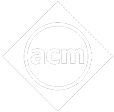- Written by Hrushikesh Vyas
- Last Modified on 15-03-2022
Exam Brief
The State Board School Examinations (Sec.) & Board of Higher Secondary Examinations, Tamil Nadu, also known as Tamil Nadu State Board, has been entrusted with the onerous responsibility of conducting the board examinations for the scholars studying within the State Board in class 10th and 12th. The mark certificates issued to ordinary 10th and 12th scholars are considered an essential and valued document for continuing education and seeking job opportunities.
Tamil Nadu Chief Minister M K Stalin had declared the valuation scale for calculating TN 12th Result 2021 in the state. According to the assessment criteria, the board will provide 50 per cent weightage to Class 10th board examination scores (average of three subjects with high marks). In contrast, 20 per cent (written in each subject) weightage will be granted to the Class 11th board exam, and 30 per cent will be given to Class 12th practicals and internal assessment. The Directorate of Government Examinations, Tamil Nadu, has announced the tentative timetable. The TN board may conduct the examination probably by March 2022.
Exam Summary
All necessary details about the Tamil Nadu Class 12th examination conducted by the Tamil Nadu state board are tabulated in the table given below. The table gives a brief idea about the exam, the exam conducting frequency, the various options of languages available, Tamil Nadu State Board important dates and more.
|
Name of the Board
|
Tamil Nadu State Board
|
|
Class
|
12th Class
|
|
Exam Date
|
Feb/ March 2022
|
|
Availability of admit card
|
January 2022
|
|
Result announcement date
|
April/ May 2022
|
|
Article about
|
Tamil Nadu Board Class 12th Exams
|
|
Official Website
|
Tamil Nadu Board Official Website
|
Official Website Link
https://apply1.tndge.org/dge-notification/HRSEC
Embibe Notice Board/Notification
Latest Update
TN Board conducts Class 12th examinations every year. The board cancelled TN Class 12th examinations 2021 in the wake of COVID-19 pandemic.
Students can check their Tamil Nadu12th result using their date of birth and registration number. The results of TN Board Class 12th examinations were released on July 19, 2021, on their official website
Tamil Nadu Class 12th Board official website
Trending News
The Directorate of Government Examinations, Tamil Nadu, has released the tentative time table. To better understand and enable students with the information on the time table of Class 12th Board Exams 2022. TN Tamil Nadu board Class 12 may conduct the examination probably by March 2022.
Exam pattern details - Total time
Class 12th Tamil Nadu exams are for 3 hours, i.e., 180 minutes for each subject. Students will have 15 minutes to go through the question paper before starting the exams. Example: If the examination starts at 9:15 AM, students will get their question paper in hand at 9:00 AM, and they need to start answering the questions at 9:15 AM. In the blueprint section, you will get to know the expected time required to solve each section in a question paper and the difficulty level for each subject.
Exam Syllabus
12th Tamil Nadu State Board Physics
| Unit and Topic Names |
Electrostatics
Introduction, Electrostatic Potential, Potential Due to a Point Charge, Potential Due To An Electric Dipole, Potential Due To A System Of Charges, Equipotential Surfaces, Potential Energy of a System of Charges, Potential Energy In An External Field, Electrostatics of Conductors, Dielectrics And Polarisation, Capacitors And Capacitance, The Parallel Plate Capacitor, Effect of Dielectric on Capacitance, Combination Of Capacitors, Energy Stored in a Capacitor |
Current Electricity
Introduction, Electric Current, Electric Currents in Conductors, Ohm’s Law, Drift Of Electrons And The Origin Of Resistivity, Limitations Of Ohm’s Law, Resistivity of Various Materials, Temperature Dependence Of Resistivity, Electrical Energy, Power, Combination Of Resistors – Series And Parallel, Cells, Emf, Internal Resistance, Cells In Series And In Parallel, Kirchhoff’s Rules, Wheatstone Bridge, Meter Bridge, Potentiometer |
Effects of Electric Current
Introduction, Electric Current, Electric Currents in Conductors, Ohm’s Law, Drift Of Electrons And The Origin Of Resistivity, Limitations Of Ohm’s Law, Resistivity of Various Materials, Temperature Dependence Of Resistivity, Electrical Energy, Power, Combination Of Resistors – Series And Parallel, Cells, Emf, Internal Resistance, Cells In Series And In Parallel, Kirchhoff’s Rules, Wheatstone Bridge, Meter Bridge, Potentiometer |
Electromagnetic Induction and Alternating Current
Introduction, The Experiments of Faraday and Henry, Magnetic Flux, Faraday’s Law of Induction, Lenz’s Law and Conservation of Energy, Motional Electromotive Force, Energy Consideration: A Quantitative Study, Eddy Currents, Inductance (Self & Mutual), AC Generator.
Introduction, AC Voltage Applied to Resistor, Representation of AC Current and Voltage by Rotating Vectors – Phasors, AC Voltage Applied to Inductor, AC Voltage Applied to Capacitor, AC Voltage Applied to a Series LCR Circuit, Power in AC Circuit, LC Oscillations, Transformers |
Electromagnetic Waves and Wave Optics
Introduction, Displacement Current, Electromagnetic Waves, Electromagnetic Spectrum
Introduction, Huygens Principle, Refraction and Reflection of Plane Waves using Huygens Principle, Coherent and Incoherent Addition of Waves, Interference of Light Waves and Young’s Experiment, Diffraction, Polarisation |
Atomic Physics
Introduction, Alpha-particle Scattering and Rutherford’s Nuclear Model of Atom, Atomic Spectra, Bohr Model of the Hydrogen Atom, The Line Spectra of the Hydrogen Atom, DE Broglie’s Explanation of Bohr’s Second Postulate of Quantisation |
Dual Nature of Radiation and Matter – Relativity
Introduction, Electron Emission, Photoelectric Effect, Experimental Study of Photoelectric Effect, Photoelectric Effect and Wave Theory of Light, Einstein’s Photoelectric Equation: Energy Quantum of Radiation, Particle Nature of Light: The Photon, Wave Nature of Matter, Davisson and Germer Experiment |
Nuclear Physics
Introduction, Atomic Masses and Composition of Nucleus, Size of the Nucleus, Mass-Energy and Nuclear Binding Energy, Nuclear Force, Radioactivity, Nuclear Energy |
12th Tamil Nadu State Board Chemistry
| Unit and Topic Names |
Atomic Structure
Discovery of Electron, Proton and Neutron, atomic number, isotopes and isobars. Thomson’s model and its limitations. Rutherford’s model and its limitations, Bohr’s model and its limitations, concept of shells and subshells, dual nature of matter and light, de Broglie’s relationship, Heisenberg uncertainty principle, concept of orbitals, quantum numbers, shapes of s, p and d orbitals, rules for filling electrons in orbitals – Aufbau principle, Pauli’s exclusion principle and Hund’s rule, electronic configuration of atoms, stability of half-filled and completely filled orbitals. |
Periodic Classification
Significance of classification, brief history of the development of periodic table, modern periodic law and the present form of periodic table, periodic trends in properties of elements -atomic radii, ionic radii, inert gas radii, Ionization enthalpy, electron gain enthalpy, electronegativity, valency. Nomenclature of elements with atomic number greater than 100. |
p-Block elements
Group -15 Elements: General introduction, electronic configuration, occurrence, oxidation states, trends in physical and chemical properties; Nitrogen preparation properties and uses; compounds of Nitrogen: preparation and properties of Ammonia and Nitric Acid. Group 16 Elements: General introduction, electronic configuration, oxidation states, occurrence, trends in physical and chemical properties, dioxygen: preparation, properties and uses, classification of Oxides, Ozone, Sulphur -allotropic forms; compounds of Sulphur: preparation properties and uses of Sulphur-dioxide, Sulphuric Acid: properties and uses; Oxoacids of Sulphur (Structures only). Group 17 Elements: General introduction, electronic configuration, oxidation states, occurrence, trends in physical and chemical properties; compounds of halogens, Preparation, properties and uses of Chlorine and Hydrochloric acid, interhalogen compounds, Oxoacids of halogens (structures only). Group 18 Elements: General introduction, electronic configuration, occurrence, trends in physical and chemical properties, uses. |
d-Block elements
General introduction, electronic configuration, occurrence and characteristics of transition metals, general trends in properties of the first row transition metals – metallic character, ionization enthalpy, oxidation states, ionic radii, colour, catalytic property, magnetic properties, interstitial compounds, alloy formation. Lanthanoids – Electronic configuration, oxidation states and lanthanoid contraction and its consequences. |
f-Block elements
General introduction, electronic configuration, occurrence and characteristics of transition metals, general trends in properties of the first row transition metals – metallic character, ionization enthalpy, oxidation states, ionic radii, colour, catalytic property, magnetic properties, interstitial compounds, alloy formation. Lanthanoids – Electronic configuration, oxidation states and lanthanoid contraction and its consequences. |
Coordination and Bio-coordination compounds
Coordination compounds – Introduction, ligands, coordination number, colour, magnetic properties and shapes, IUPAC nomenclature of mononuclear coordination compounds. Bonding, Werner’s theory, VBT, and CFT |
| Nuclear Chemistry |
Solid-state
Classification of solids based on different binding forces: molecular, ionic, covalent and metallic solids, amorphous and crystalline solids (elementary idea). Unit cell in two dimensional and three dimensional lattices, calculation of density of unit cell, packing in solids, packing efficiency, voids, number of atoms per unit cell in a cubic unit cell, point defects |
Thermodynamics-II
Concepts of System and types of systems, surroundings, work, heat, energy, extensive and intensive properties, state functions. First law of thermodynamics -internal energy and enthalpy, heat capacity and specific heat, measurement of U and H, Hess’s law of constant heat summation, enthalpy of bond dissociation, combustion, formation, atomization, sublimation, phase transition, ionization, solution and dilution. Second law of Thermodynamics (brief introduction) Introduction of entropy as a state function, Gibb’s energy change for spontaneous and nonspontaneous processes, criteria for equilibrium. Third law of thermodynamics (brief introduction). |
Chemical Equilibrium-II
Equilibrium in physical and chemical processes, dynamic nature of equilibrium, law of mass action, equilibrium constant, factors affecting equilibrium – Le Chatelier’s principle, ionic equilibrium- ionization of acids and bases, strong and weak electrolytes, degree of ionization, ionization of poly basic acids, acid strength, concept of pH, hydrolysis of salts (elementary idea), buffer solution, Henderson Equation, solubility product, common ion effect (with illustrative examples). |
Chemical Kinetics-II
Rate of a reaction (Average and instantaneous), factors affecting rate of reaction: concentration, temperature, catalyst; order and molecularity of a reaction, rate law and specific rate constant, integrated rate equations and half-life (only for zero and first order reactions). |
Surface Chemistry
Adsorption – physisorption and chemisorption, factors affecting adsorption of gases on solids, colloidal state: distinction between true solutions, colloids and suspension; lyophilic, lyophobic, multi-molecular and macromolecular colloids; properties of colloids; Tyndall effect, Brownian movement, electrophoresis, coagulation. |
Electrochemistry-I
Redox reactions, EMF of a cell, standard electrode potential, Nernst equation and its application to chemical cells, Relation between Gibbs energy change and EMF of a cell, conductance in electrolytic solutions, specific and molar conductivity, variations of conductivity with concentration, Kohlrausch’s Law, electrolysis. |
Electrochemistry-II
Redox reactions, EMF of a cell, standard electrode potential, Nernst equation and its application to chemical cells, Relation between Gibbs energy change and EMF of a cell, conductance in electrolytic solutions, specific and molar conductivity, variations of conductivity with concentration, Kohlrausch’s Law, electrolysis. |
| Isomerism in Organic Chemistry |
Hydroxy Derivatives
Alcohols: Nomenclature, methods of preparation, physical and chemical properties (of primary alcohols only), identification of primary, secondary and tertiary alcohols, mechanism of dehydration. |
Ethers
Nomenclature, methods of preparation, physical and chemical properties, uses |
Carbonyl Compounds
Aldehydes and Ketones: Nomenclature, nature of carbonyl group, methods of preparation, physical and chemical properties, mechanism of nucleophilic addition, reactivity of alpha hydrogen in aldehydes, uses. |
Carboxylic Acids
Nomenclature, acidic nature, methods of preparation, physical and chemical properties; uses. |
Organic Nitrogen Compounds
Amines: Nomenclature, classification, structure, methods of preparation, physical and chemical properties, uses, identification of primary, secondary and tertiary amines. |
Biomolecules
Classification (aldoses and ketoses), monosaccharides (glucose and fructose), D-L configuration Proteins -Elementary idea of – amino acids, peptide bond, polypeptides, proteins, structure of proteins – primary, secondary, tertiary structure and quaternary structures (qualitative idea only), denaturation of proteins. Nucleic Acids: DNA and RNA |
12th Tamil Nadu State Board Botany
| Units |
Taxonomy of Angiosperms
Biodiversity; Need for classification; taxonomy and systematics; concept of species and taxonomic hierarchy; binomial nomenclature; tools for study of taxonomy museums, zoological parks, herbaria, botanical gardens, keys for identification. |
Anatomy
Anatomy and functions of different systems (digestive, circulatory, respiratory, nervous and reproductive) of an insect-cockroach (a brief account only). |
Cell Biology and Genetics
Cell theory and cell as the basic unit of life, structure of prokaryotic and eukaryotic cells; Plant cell and animal cell; cell envelope; cell membrane, cell wall; cell organelles – structure and function; endomembrane system- endoplasmic reticulum, ribosomes, golgi bodies, lysosomes, vacuoles; mitochondria, plastids, microbodies; cytoskeleton, cilia, flagella, centrioles (ultrastructure and function); nucleus.
Heredity and variation: Mendelian inheritance; deviations from Mendelism – incomplete dominance, codominance, multiple alleles and inheritance of blood groups, pleiotropy; elementary idea of polygenic inheritance; chromosome theory of inheritance; chromosomes and genes; Sex determination – in human being birds and honey bee; linkage and crossing over; sex linked inheritance – haemophilia, colour blindness; Mendelian disorders in humans – thalassemia; chromosomal disorders in humans; Down’s syndrome, Turner’s and Klinefelter’s syndromes. |
Biotechnology
Application of biotechnology in health and agriculture: Human insulin and vaccine production, stem cell technology, gene therapy: genetically modified organisms – Bt crops; transgenic animals; biosafety issues, biopiracy and patents |
Plant Physiology
Photosynthesis as a means of autotrophic nutrition; early experiments, site of photosynthesis, pigments involved in photosynthesis (elementary idea); photochemical and biosynthetic phases of photosynthesis; cyclic and non-cyclic photophosphorylation; chemiosmotic hypothesis; photorespiration; C3 and C4 pathways; factors affecting photosynthesis
Exchange of gases; do plants breathe; cellular respiration – glycolysis, fermentation (anaerobic), TCA cycle and electron transport system (aerobic); energy relations – number of ATP molecules generated; amphibolic pathways; respiratory quotient.
Seed germination; characteristics, measurements and phases of plant growth, growth rate; conditions for growth; differentiation, dedifferentiation and redifferentiation; sequence of developmental processes in a plant cell; growth regulators – auxin, gibberellin, cytokinin, ethylene, ABA; seed dormancy; vernalisation; photoperiodism. |
Biology in Human Welfare
Pathogens; parasites causing human diseases (Malaria, dengue, chikungunya, filariasis, ascariasis, typhoid, pneumonia, common cold, amoebiasis, ringworm) and their control; Basic concepts of immunology – vaccines; cancer, HIV and AIDS; Adolescence – drug and alcohol abuse.
Microbes in food processing, industrial production, sewage treatment, energy generation and microbes as bio – control agents and bio – fertilizers. Antibiotics; production and judicious use |
12th Tamil Nadu State Board Zoology
| Units |
Human Physiology
Introduction to respiratory organs in animals; Respiratory system in humans; mechanism of breathing and its regulation in humans – exchange of gases, transport of gases and regulation of respiration, respiratory volumes; disorders related to respiration – asthma, emphysema, occupational respiratory disorders.
Composition of blood, blood groups, coagulation of blood; composition of lymph and its function; circulatory pathways; human circulatory system – Structure of human heart and blood vessels; cardiac cycle, cardiac output, ECG; double circulation; regulation of cardiac activity; disorders of circulatory system – hypertension, coronary artery disease, angina pectoris, heart failure.
Modes of excretion – ammonotelism, ureotelism, uricotelism; human excretory system – structure and function; urine formation, osmoregulation; regulation of kidney function – renin – angiotensin, atrial natriuretic factor, ADH, diabetes insipidus; micturition; role of other organs in excretion; disorders – uremia, renal failure, renal calculi, nephritis; dialysis and artificial kidney, kidney transplant.
Types of movement – amoeboid, ciliary, flagellar, muscular; types of muscles; skeletal muscle, contractile proteins and muscle contraction; skeletal system and its functions; joints; disorders of muscular and skeletal systems – myasthenia gravis, tetany, muscular dystrophy, arthritis, osteoporosis, gout.
Neuron and nerves; Nervous system in humans – central nervous system and peripheral nervous system; generation, conduction and transmission of nerve impulse; reflex action; sensory perception; sense organs; elementary structure and functions of eye and ear.
Endocrine glands and hormones; human endocrine system – hypothalamus, pituitary, pineal, thyroid, parathyroid, thymus, adrenal, pancreas, gonads; hormones of heart, kidney and gastrointestinal tract; mechanism of hormone action (elementary idea); role of hormones as messengers and regulators, hypo – and hyperactivity and related disorders; dwarfism, acromegaly, cretinism, goiter, exophthalmic goiter, diabetes, Addison’s disease. |
| Microbiology |
| Immunology |
Modern Genetics
Heredity and variation: Mendelian inheritance; deviations from Mendelism – incomplete dominance, codominance, multiple alleles and inheritance of blood groups, pleiotropy; elementary idea of polygenic inheritance; chromosome theory of inheritance; chromosomes and genes; Sex determination – in human being birds and honey bee; linkage and crossing over; sex linked inheritance – haemophilia, colour blindness; Mendelian disorders in humans – thalassemia; chromosomal disorders in humans; Down’s syndrome, Turner’s and Klinefelter’s syndromes.
Search for genetic material and DNA as genetic material; Structure of DNA and RNA; DNA packaging; DNA replication; Central Dogma; transcription, genetic code, translation; gene expression and regulation – lac operon; Genome, Human and rice genome projects; DNA fingerprinting. |
Environmental Science
Organisms and environment: Habitat and niche, population and ecological adaptations; population interactions – mutualism, competition, predation, parasitism; population attributes – growth, birth rate and death rate, age distribution.
Biodiversity – Concept, patterns, importance; loss of biodiversity; biodiversity conservation; hotspots, endangered organisms, extinction, Red Data Book, Sacred Groves, biosphere reserves, national parks, wildlife sanctuaries and Ramsar sites |
| Applied Biology |
| Theories of Evolution |
| Aquaculture |
12th Tamil Nadu State Board Mathematics
| Serial Number |
Topics |
| 1 |
Systems of Equations
Systems of linear equations, methods of solution |
| 2 |
Applications of Matrices
Matrices for transformations: Matrices for Translation, Reflection, Rotation, Glide reflection, Shear and Stretch, Isometry and similarity matrices for the same. |
| 3 |
Analytical Geometry
Definition of a conic, Derivation of the standard equation of Parabola, Ellipse, Hyperbola and Rectangular Hyperbola, Chords, Tangents & Normals, and more. |
| 4 |
Vector Algebra
Vectors and Scalars Representations of vectors and operations of addition and subtraction, Scalar and vector products, Triple products, products 4 vectors, and more. |
| 5 |
Applications of Differentiation
Derivative as a rate measurer, Derivative as a measure of slope, Mean Value Theorems, Curve tracing, et cetera. |
| 6 |
Applications of Integration
Definite integral and its applications |
| 7 |
Differential Equations
Formation of differential equations, I order and II Order Linear Equations, Applications. |
| 8 |
Probability Distribution
Random variable, probability functions, mathematical expectation, discrete and continuous distribution. |
| 9 |
Complex Numbers
Complex Algebra Fundamental operations on complex numbers, Applications. |
| 10 |
Algebraic Structures
Rings. Integral Domains and Fields, Group Structure. |
Exam Blueprint
|
Sl. No.
|
Form of Questions
|
Expected Time
|
|
1
|
Part I
|
30 minutes
|
|
2
|
Part II
|
45 minutes
|
|
3
|
Part III
|
45 minutes
|
|
4
|
Part IV
|
60 minutes
|
|
Total
|
180 minutes
|
Level of Questions
|
1
|
Easy
|
60%
|
|
2
|
Difficult
|
30%
|
|
3
|
Very difficult
|
10%
|
The blueprint for the chemistry for Class 12th TN board is given below:
|
Part – I
|
Choose the Correct answer: answer all questions.
Question numbers: from 1 to 30.
Distribution of questions: 10-Inorganic, 10-Physical and 10- Organic Portions
|
30 Marks
|
|
Part – II
|
Answer in one or two sentences: Question number from 31-51.
Answer 15 questions out of 21 questions.
Question number 31 -37 (7) from Inorganic
Question number 38 – 44 (7) from Physical
Question number 45 – 51 (7) from Organic
|
45 Marks
|
|
Part – III
|
Answer any Seven questions choosing at least two from each section A, B and C
Section – A – Inorganic 4 questions 52-55 (one problem)
Section – B – Physical 4 questions 56-59 (one problem)
Section – C – Organic 4 questions 60-63 (one mechanism)
|
35 Marks
|
|
Part – IV
|
Question number 70 is compulsory consisting of problems carrying 10 marks (either or type)
70 (a) Organic Problem – 5 marks
(b) Inorganic Problem – 5 marks OR
(c) Organic Problem – 5 marks
(d) Physical Problem – 5 marks
Question numbers 64 and 65 – Inorganic
Question numbers 66 and 67 – Physical
Question numbers 68 and 69 – Organic answer any three from question number 64-69
|
40 Marks
|
12th Tamil Nadu State Board Levels of Questions in Botany
|
S.No.
|
Level of questions
|
Per cent
|
|
1
|
Easy type
|
50
|
|
2
|
Average level
|
40
|
|
3
|
Difficult level
|
10
|
12th Tamil Nadu State Board Weightage to Learning Outcomes in Zoology
|
Objective
|
Mark
|
Percentage
|
|
Knowledge
|
84
|
37
|
|
Understanding
|
75
|
33
|
|
Application
|
60
|
26
|
|
Skill
|
11
|
4
|
|
Total
|
230
|
100%
|
Structure of 12th Tamil Nadu State Board Physics Question Paper and Syllabus
Weightage of Learning Outcomes
|
Objective
|
Mark
|
Percentage
|
|
Knowledge
|
81
|
35%
|
|
Understanding
|
92
|
40%
|
|
Application
|
46
|
20%
|
|
Skill
|
11
|
5%
|
|
Total
|
230
|
100%
|
There are a total of 230 marks inclusive of choice. There can be a slight variation of 5%.
12th Tamil Nadu State Board Weightage to Various Types of Questions in Physics:
|
Sl. No.
|
Type of Questions
|
Mark For Each Question
|
Total No. of Questions
|
No. of Questions to be Answered
|
Total Marks
|
|
1
|
Part I – MCQ
|
1
|
30
|
30
|
30
|
|
2
|
Part II – VSA
|
3
|
20
|
15
|
45
|
|
3
|
Part III – SA
|
5
|
12
|
7
|
35
|
|
4
|
Part IV – LA
|
10
|
8
|
4
|
40
|
|
70
|
56
|
150
|
- Of the total 230 marks, numerical problems must be given 35 marks (In Part I – 5 numerical problems, Part II – 5 numerical problems, Part III – 3 numerical problems).
- In part III, 3 numerical problems must be given. Out of these three problems, numerical problems should be made mandatory. This mandatory problem should have an internal choice, provided both the problems must be from the same chapter (unit).
- Of the 220 marks, at least 60% mark should be given for the questions from solved problems, Self-evaluation questions and exercise problems. The rest will be from the content of the textbook.
- MCQ – Multiple Choice Question VSA – Very Short Answer SA – Short Answer LA – Long Answer
12th Tamil Nadu State Board weightage to various units (chapters) in Physics
|
Unit
|
Marks
|
|
Electrostatics
|
25
|
|
Current electricity
|
20
|
|
Effects of electric current
|
20
|
|
Electromagnetic induction and alternating current
|
25
|
|
Electromagnetic waves and wave optics
|
25
|
|
Atomic physics
|
25
|
|
Dual nature of radiation and matter – Relativity
|
12th Tamil Nadu State Board weightage of various types of questions in Chemistry
|
Sl. No.
|
Type of Questions
|
Total No. of questions
|
Total Marks
|
|
1
|
Part I – Objective
|
30
|
30
|
|
2
|
Part II – VSA
|
21
|
63
|
|
3
|
Part III – SA
|
12
|
60
|
|
4
|
Part IV – LA
|
8
|
80
|
|
233
|
12th Tamil Nadu State Board weightage to various units (chapters) in Chemistry
|
Unit
|
Marks
|
|
Atomic Structure
|
10
|
|
Periodic Classification
|
09
|
|
p-Block elements
|
12
|
|
d-Block elements
|
18
|
|
f-Block elements
|
07
|
|
Coordination and Bio-coordination compounds
|
11
|
|
Nuclear Chemistry
|
09
|
|
Solid-state
|
09
|
|
Thermodynamics-II
|
10
|
|
Chemical equilibrium-II
|
10
|
|
Chemical Kinetics-II
|
12
|
|
Surface Chemistry
|
11
|
|
Electrochemistry-I
|
14
|
|
Electrochemistry-II
|
10
|
|
Isomerism in Organic Chemistry
|
08
|
|
Hydroxy Derivatives
|
12
|
|
Ethers
|
07
|
|
Carbonyl Compounds
|
14
|
|
Carboxylic Acids
|
14
|
|
Organic Nitrogen Compounds
|
11
|
|
Biomolecules
|
07
|
|
Chemistry in Action
|
08
|
|
Total
|
233
|
Design of the 12th Tamil Nadu State Board Botany question paper
|
Objective
|
Mark
|
|
Knowledge
|
69
|
|
Understanding
|
92
|
|
Application
|
58
|
|
Skill
|
11
|
|
Total
|
230
|
12th Tamil Nadu State Board Weightage of various types of questions in Botany
|
Sl. No.
|
Units
|
Total marks
|
|
1
|
Taxonomy of Angiosperms
|
49
|
|
2
|
Anatomy
|
33
|
|
3
|
Cell Biology and Genetics
|
33
|
|
4
|
Biotechnology
|
29
|
|
5
|
Plant Physiology
|
62
|
|
6
|
Biology in Human Welfare
|
24
|
|
Total
|
230
|
Design of 12th Tamil Nadu State Board Zoology question paper and syllabus
Weightage to various types of questions:
|
Sl. No.
|
Type of questions
|
Mark for each question
|
Total number of questions
|
Number of questions to be answered
|
Total Marks
|
|
1
|
Section A (MCQ)
|
1
|
30
|
30
|
30
|
|
2
|
Section B (VSA)
|
3
|
20
|
15
|
45
|
|
3
|
Section C (SA)
|
5
|
12
|
07
|
35
|
|
4
|
Section D (LA)
|
10
|
08
|
04
|
40
|
|
Total
|
70
|
56
|
150
|
12th Tamil Nadu State Board Weightage of various types of questions in Zoology:
|
Sl. No.
|
Units
|
Total Marks
|
|
1
|
Human Physiology
|
72
|
|
2
|
Microbiology
|
24
|
|
3
|
Immunology
|
11
|
|
4
|
Modern Genetics
|
19
|
|
5
|
Environmental Science
|
24
|
|
6
|
Applied Biology
|
41
|
|
7
|
Theories of Evolution
|
10
|
|
8
|
Aquaculture
|
29
|
Study Plan to Maximise Score
Preparation Tips
- Below are some highly effective and important tips, which can help you get high marks in Class 12th exams without fail:
- Remember that you are your greatest contender. Attempt to do better than the last time. Take challenges, if you had secured x % marks in the last exam, attempt to outdo that by scoring about (x+20) % in the coming exam. Outscore your previous percentage and always target for higher scores. Focus on increasing the marks in individual subjects. This may help analyse the precise areas you would like to enhance, which may level up scores and percentages.
- Maintaining a positive attitude is extremely important in crucial stages of life. With this attitude, it’s possible to tackle many difficult problems easily. A good attitude helps to maintain high confidence levels, and it is possible to pass even the most difficult exams with flying colours. In Class 12th exams, a positive attitude and high confidence levels can help crack the difficult questions with ease.
- The majority of us immerse ourselves in the countless reference books available for each subject. These valuable books aid in a better and more straightforward knowledge of the subject. However, most students learn from reference materials instead of the primary syllabus book. According to experts, sticking to the primary syllabus material and covering all of the topics in the book is always a smart idea. The final board exam contains questions mainly from the syllabus of the prescribed textbooks.
- If you are in the Science stream, you would possibly be good in Physics and Arithmetic but not that good in Chemistry. Identify the weak areas and begin working on them so that it doesn’t impact the general percentage. The most common mistake made by pupils is that they do not want to study weak subjects. Rather than ignoring the topic, identify your weak points and work to strengthen them so that you can demonstrate them in relevant areas.
Exam Taking Strategy
- Keep your cool as much as possible on the day of the exam. If you discover that there are pending things to review, ignore them. The best thing is to keep all books, notebooks and notes at home and reach the exam centre with a mind. attempt to focus and concentrate without stressing yourself much.
- Gather all of your mental strength and convince yourself that you will do fantastic once the test bell rings and the question papers are delivered. Read each question carefully and make a plan for which one you’ll tackle first. Go ahead and answer the questions you already know. Starting with these will increase your self-assurance. After you’ve written your responses, go over them again and revise them. Don’t be concerned if you don’t know the answer to a certain question. That is something you should save for last.
- Try to stay away from social media platforms such as Twitter, Facebook, and Instagram, as they eat up a lot of your time.
- Minimise the utilisation of your smartphone the maximum amount as possible. Refrain from using messenger apps like WhatsApp etc. you’ll use them just for study purposes, discussing things with other students etc.
Detailed Study plan
- The Class 12th exam is likely to be the most difficult exam you’ve ever taken. So start preparing for it as early as possible. One of the most crucial aspects of board test preparation is mastering effective time management skills. Make a daily schedule that you must follow. Utilise whatever little time you get for studies as this may help in increasing the marks considerably. When your mind is fresh, study subjects you want to remember first thing in the morning. Invest a minimum of 8 hours a day for studies. Equal time should be dedicated to each subject so that every subject is covered.
- Old question papers are great assets for college kids. It is noticed that students who practised question papers of previous years do far better in board exams than students who haven’t done an equivalent. Solve previous years’ question papers, keeping the time frame in mind. Don’t solve the question paper in parts or take an extended time than needed. This may not serve the aim. While solving the paper, solve as if you’re sitting in the exam hall. It’s possible that you won’t be able to resolve your shortcomings immediately, but with practice, you’ll surely be ready to do better. Practising 10 years question papers is the simplest thing to do.
- It is quite obvious that a clean solution sheet fetches more marks than the shabby one. So dedicate some time every day to practice answer writing. Focus on clear writing and making sure there are no spelling mistakes and overwriting. Many students disregard these simple things, but these can help in geting a few extra marks in board exams. And these extra marks help in boosting the overall percentage to quite an extent.
- It is needless to mention that exam times are highly stressful. Therefore, it’s important that you take proper care of your health at this point. Eat properly, take proper rest and enjoy activities which keep the mind relaxed. This is important because if your health isn’t good, you’ll not be ready to handle the strain of exams.
Previous Year Papers
Studying the previous year question paper for any board exams is more important. It covers 60% of the whole preparation, and a student can score maximum marks and analyse the question types in a particular chapter.
Tamil Nadu Class 12th students can download the previous year question papers using the below link
Tamil Nadu Class 12th Previous Years Question Papers
Student Counselling
After grade 12, the most difficult decision for any child is deciding on a good professional route. When it comes to selecting a reputable institution or school, students are usually torn between following the herd mentality and enrolling in the most popular courses, selecting a course based on what their parents require, or just following their friends. The vast majority of students select courses without first assessing their own strengths, limitations, or interests. They make a poor decision due to peer pressure, then attempt to change courses or colleges afterwards.
Owing to the COVID-19 pandemic, the Tamil Nadu Board of Education has introduced a number of creative steps to support children and their parents. A manual on mental health and wellbeing, as well as a series of webinars for students, teachers, and parents’ psychosocial well-being and mental wellness, are among the activities.
Parent/Gaurdian counselling
1. How can I help my child in Class 12th get high grades in physics?
Answer: The below tips help your child to get good marks in Physics.
- The recommended textbook, which covers the entire Class 12th Physics course, is strictly followed in the Physics board exam. As a result, pupils are encouraged to study the Physics book for Class 12th.
- Important formulas should be readily available to pupils so that they can respond to numerical questions quickly.
- On the Physics paper, a drawing question, such as a graph or a circuit, may be required. Students should concentrate on the main qualities of the diagram to achieve full marks on this question.
- Students should practise previous year’s Class 12th Physics test papers regularly. This will aid their mental and physical preparation for the examination.
2. How can I help my child in Class 12th get high grades in Mathematics?
Answer: The below tips help your child to get good marks in Mathematics.
- Students must fully comprehend the layout of the Maths paper.
- Students must be familiar with the test structure and the new syllabus developed by the board.
- Students must devise a study strategy that encompasses all critical topics and concepts. To get a great score, you must go over the entire textbook. The concepts given in the textbook are the focus of the entire exam.
- The Tamil Nadu board distributes sample papers every academic year. The Tamil Nadu board has revised the examination schedule this year, so students should be cautious. Maths sample papers can be found in a variety of online and offline places.
- Mastering mathematics necessitates memorising equations, ideas, and concepts by heart.
- For passing a Mathematics exam, not only do concepts from Class 12th matter, but so do equations from previous courses. Use handwritten notes on equations, theories, and processes for last-minute revision.
3. What factors should I consider while deciding on a future job for my child?
Answer: The professional choices made by a student have a significant impact on their future development and growth. Encourage pupils to investigate their hobbies in order to encourage them to pursue their passions and work hard to achieve their goals. The four streams discussed include science, commerce, and humanities and the skills required to pursue them. We continue to shape the three streams by addressing the primary parts of the requisite talents and curriculum. As a result, parents must be acutely aware of their children’s difficulties and do everything they can to help them overcome those problems without overburdening them.
4. How can I help my child in Class 12th get high grades in Chemistry?
Answer: Here are some study strategies to help you prepare well for the Goa board Class 12th Chemistry exam:
- Examiners repeat specific essential questions over several years, which is why reviewing previous years’ tests is so important.
- Make a note of the important sections and recurring subjects while you’re at it so you may go over them again during the last lap of revision.
- A substantial component of the Goa board exams consists of questions and themes from textbooks.
- To ace your Chemistry paper, study all of the ideas, including the diagrams and graphs, followed by solved examples and exercise questions. Keep a reference book next to your textbooks for a quick clarification on difficult ideas, and make a note of the important and difficult questions as you go.
- Time is a significant constraint when taking any exam. While answering a descriptive question may sound simple at first, it not only takes a long time but also does not guarantee complete marks because you may miss out on important keywords or points while compromising on other answers.
5. How can I help my child in Class 12th get high grades in Biology?
Answer: Here are some Tamil Nadu board Class 12th Biology preparation suggestions that may assist students in effectively arranging their study.
- The structure for Class 12th Biology must first and foremost be understood.
- Every year, the board makes the pattern public to help students become familiar with it and prepare adequately.
- Knowing the pattern ahead of time can also help you save time on the exam.
- The majority of the choice-based questions on the board test come from the same subject, despite the board test allowing choices.
- Students must study the entire curriculum completely and be confident in their ability to answer any question on the exam. Students should limit their board exam preparation to the syllabus because the questions are drawn from the syllabus.
- Students can solve previous year exams Class 12th Biology sample papers to better understand the types and patterns of questions. Solving a few questions will give them enough practise to deal with any exam question. Students would also be able to finish the paper in the time allotted.
Frequently Asked Questions
Q.1. Where can Private Candidates Apply for Examination?
A. Candidates can apply through the Nodal Centre. Nodal Centre details will be posted on the website Tamil Nadu Board official Websites
Q.2. How to apply for a duplicate certificate?
A. Students who have lost the original certificate and require a duplicate should submit their application to the Headmaster of the school where the student has studied in the case of school candidates, duly filling in the application and paying the fee for the issue of duplicate certificate for onward transmission to the Directorate of Government Examinations through DEO/DIET. A Certificate procured from the Revenue official, not below the rank of Tehsildar, should be enclosed along with the application for the authenticity of loss of original certificate. In the case of Private Candidates, Applications may be submitted directly to the Directorate of Government Examinations.
Q.3. What will be the fee details for duplicate certificates?
A.
(i) Applying for the first time as Duplicate Certificate Rs.505/-
(ii) Applying for the second time as Triplicate Rs. 755/-
Q.4. How to apply for migration certificates?
A. The filled up applications should be submitted along with a Xerox copy of any of the certificates mentioned above based on which candidate is applying and a demand draft of a Nationalized bank. Alternatively, the candidate can take challan towards fees prescribed by this department.
Q.5. What will be the fee details for migration certificates?
A. Fees for the Migration Certificate, i.e., a demand draft for Rs.505/- obtained from any Nationalized Bank or challan for Rs.505/- payable through any Tamil Nadu State Government treasury branch in favour of Director of Government Examinations, Chennai – 600 006.
List of Educational Institutions
List of Schools/Colleges
| College Name |
Locality |
| Kongunadu Arts And Science College, |
Coimbatore |
| Loyola College |
Chennai |
| Bishop Heber College |
Tiruchirapalli |
| The Women’s Christian College |
Chennai |
| P.S.G. College of Arts & Science |
Coimbatore |
| Madras Christian College |
Chennai |
| Ayya Nadar Janaki Ammal College |
Virudhunagar |
| P.S.G.R. Krishnammal College for Women |
Coimbatore |
| Ethiraj College for Women |
Chennai |
| Kongunadu Arts & Science College |
Coimbatore |
| Sri Krishna Arts and Science College |
Coimbatore |
| Holy Cross College |
Tiruchirapalli |
| Fatima College (Autonomous) |
Madurai |
| A.V.C. College |
Mayiladuthurai |
| Dr. N.G.P. Arts & Science College |
Coimbatore |
| Chinmaya International Residential School |
Coimbatore |
| Good Shepherd International School |
Ootacamund |
| Isha Home School |
Coimbatore |
| St. Jude’s Public School and Junior College |
Kotagiri |
| Montfort Anglo Indian Higher Secondary School |
Yercaud |
| DAV Boys Senior Secondary School |
Gopalapuram |
Parent Counselling
1. How can my child do well in physics in 12th grade?
Answer: Some strategies to score good marks in physics are listed below:
- Students that struggle with mathematics should begin by reading Modern Physics. The Semiconductor chapter is one of the most essential, with a weighted average of 8 points. Atoms and nuclei are worth a total of six points.
- Dual Nature of Radiation is the following set of chapters, and it is worth 4 points. Three points are assigned to the communication system. Having a firm grasp on these chapters aids students in achieving higher grades in Physics.
- Now you must concentrate on essential and tough topics such as Optics, which is worth 14 points on the board test.
- Current and Electricity is a 7-point chapter that is also easy. If you haven’t studied electrostatics or magnetism yet, you should skip these chapters because they take longer to complete than the rest. These chapters, on the other hand, are critical for competitive exams.
- Another unit on which you should concentrate if you want to do well is EMI. It’s a crucial unit for both board examinations and competitive exams.
Carefully practise the ray diagram and other relevant diagrams. Drawing and studying will assist you in grasping numerous topics more quickly and easily.
2. How can my child get a 90+ in accountancy in Class 12th?
Answer: Accountancy is both a theoretical and a practical topic. Students can achieve good results with frequent practice, careful planning, and preparedness.
- First and foremost, I would advise against memorising accounting. Attempt to comprehend the topic’s fundamentals and principles.
- Always pay attention in class – You should always pay attention in class and understand the things that are being discussed. If you don’t comprehend something, ask questions.
- Practice – When you go home from school, answer questions on the topic that was covered in class. It will strengthen your foundation and instil confidence in you. Pay special attention to the FORMATS you use to create your journal, ledger, and balance sheet.
- Works to read – In my opinion, you should only read T.S. GREWAL and D.K. GOEL’s books on accounting. Solve all examples and exercises from T.S. Grewal for the exam, and just examples from D.K. Goel.
- The most significant subjects to follow are accounting for share capital, accounting for partnership enterprises, accounting for non-profit organisations, and cash flow statements. However, if you have a really high objective (90+), you should practise all of the topics.
- Calculations- Work through a variety of problems from textbooks (T.S. Grewal/D.K. Goel), sample papers, and questions available online. This will assist you in mastering calculations.
- Before taking the Accountancy board exam, you need to complete at least 15 sample papers. Before the boards, try to complete 20 practice papers. Plan to finish 15 sample papers from T.S. Grewal’s An aid to Accountancy and 5 from D.K. Goel’s An aid to Accountancy.
- Always remember, solve the sample paper provided by the Tamil Nadu board. It will help you a lot. Sometimes 2-3 questions are asked from the sample paper released by the Tamil Nadu board.
- At last, read the questions properly and then attend to the questions. Don’t stick to a particular problem if you find difficulties to solve. Just move on and solve other questions.
3. Which stream should my child take if he or she is in 12th grade commerce?
Answer: Commerce studying students have the following career options:
- Chartered Accountant
- Business Management
- Advertising and Sales Management
- Digital Marketing
- Human resource development
4. Which stream should my child take if he or she is in 12th grade science?
Answer: Science studying students have the following career options:
- BTech/BE
- Bachelor of Medicine & Bachelor of Surgery ( MBBS)
- Bachelor of Pharmacy
- Bachelor of Medical Lab Technology
- BSc Home Science /Forensic Science
List of Future Exam
Students studying in various streams like Science, Commerce and Arts have many choices available in competitive exams after 12th. They can explore their passion by pursuing a course after 12th in the area of their interest. Cracking an entrance examination after the 12th would help students choose the higher education of their own choice at the UG level. We are providing a list of future entrance exams that can be opted by the students according to their interest and stream:
|
Streams
|
Exams
|
|
Engineering
|
Joint Entrance Examination (JEE) Main
JEE Advanced
Birla Institute of Technology and Science Admission Test (BITSAT) entrance exam
COMED-K
IPU-CET (B. Tech)
Manipal (B. Tech)
VITEEE
AMU (B. Tech)
NDA Entrance with PCM (MPC)
|
|
Medical
|
National Eligibility Cum Entrance Test (NEET)
AIIMS
JIPMER
|
|
Defence Services
|
Indian Maritime University Common Entrance Test
Indian Navy B.Tech Entry Scheme
Indian Army Technical Entry Scheme (TES) ·
National Defence Academy and Naval Academy Examination (I)
|
|
Fashion And Design
|
National Institute of Fashion Technology (NIFT) Entrance Test
National Institute of Design Admissions
All India Entrance Examination for Design (AIEED)
Symbiosis Institute of Design Exam
Footwear Design and Development Institute
Maeer’s MIT Institute of Design
National Institute of Fashion Design
National Aptitude Test in Architecture
Center for Environmental Planning and Technology (CEPT)
|
|
Social Science
|
Banaras Hindu University
IIT Madras Humanities and Social Sciences Entrance Examination (HSEE)
TISS Bachelors Admission Test (TISS-BAT)
|
|
Law
|
Common-Law Admission Test
All India Law Entrance Test (AILET)
|
|
Science
|
Kishore Vaigyanik Protsahan Yojana (KVPY)
National Entrance Screening Test (NEST)
|
|
Mathematics
|
Indian Statistical Institute Admission
Admissions to Universities
Various B.Sc Programs
Banasthali Vidyapith Admission
|
Practical Knowledge/Career Goals
Future Skills
- Hardware and software components are combined in endpoint IoT devices. With processors being integrated into everything from a toaster to a factory machine, the demand for embedded software engineers is growing. An engineer should be able to write embedded software that functions in an uncontrolled physical environment and cope with inaccurate data (think sensor drifts).
- Because IoT devices typically have limited computational resources, C is the language of choice for developing embedded software. It is small, requires little processing resources, provides quick performance, and is suitable for developing low-level programmes.
- C++ is typically used as a preprocessor for C because it lacks object-oriented features. Other languages, such as Java SE Embedded and Java ME Embedded, have recently gained popularity among embedded engineers.
- Experience with GPIO (General Purpose Input Output) and I2C (Inter-Integrated Circuit — pronounced I-squared-C) interfaces, which are used to create communication between a microcontroller and a connected device, is another crucial asset for embedded software development.
Career Skills
If you want to achieve the job of your dreams or thrive in your current career, have a look at the abilities listed below, assess where you stand, and figure out how to improve the areas where you are lacking. The following is a list of abilities that one should obtain in order to land a job.
- Communication Skills (Listening, Speaking And Writing)
- Analytical And Research Skills
- Flexibility/Adaptability
- Interpersonal Abilities
- Ability To Make Decisions And Solve Problems
- Ability To Plan, Organise And Prioritise Work
- Ability To Wear Multiple Hats
- Leadership/Management Skills
- Attention To Detail
- Self-Confidence
- Public Speaking
Career Prospects/Which stream to choose
After Class 12th students can choose the below-mentioned stream according to their respective subjects.
Students who are studying in Class 12th commerce have the following career options:
- Chartered Accountant
- Business Management
- Advertising and Sales Management
- Digital Marketing
- Human resource development
Students who are studying in Class 12th science have the following career options:
- BTech/BE
- Bachelor of Medicine & Bachelor of Surgery ( MBBS)
- Bachelor of Pharmacy
- Bachelor of Medical Lab Technology
- BSc Home Science /Forensic Science
Students who are studying in Class 12th arts have the following career options:
- Product Designing
- Media / Journalism
- Fashion Technology
- Video Creation and editing
- HR training, school teaching, etc
















































